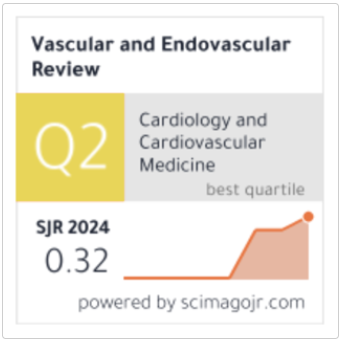Effect of Dialysis Modality and Membrane Permeability on FGF 23 Level and Cardiovascular Calcification in ESRD Patients.
Keywords:
FGF-23, ESRD, Hemodiafiltration, Hemodialysis, Cardiovascular Calcification, Intima-Media Thickness, Phosphate MetabolismAbstract
Background: End-stage renal disease (ESRD) is frequently accompanied by cardiovascular complications, in part due to elevated levels of fibroblast growth factor 23 (FGF-23) and vascular calcification. Hemodiafiltration (HDF), with its superior middle-molecule clearance, may offer advantages over conventional high-flux hemodialysis (HD) in reducing FGF-23 and cardiovascular risk.
Objective: To evaluate the effect of dialysis modality and membrane permeability on serum FGF-23 levels and cardiovascular calcification in ESRD patients.
Methods: This cross-sectional study included 50 ESRD patients on dialysis for ≥6 months, divided into two groups: 25 on high-flux HD and 25 on post-dilution online HDF. Pre- and post-dialysis FGF-23 levels were measured via ELISA. Cardiovascular calcification was assessed using echocardiography, carotid intima-media thickness (IMT), and carotid duplex ultrasonography.
Results: HDF patients demonstrated significantly lower pre- and post-dialysis FGF-23 levels and a greater reduction ratio (p < 0.001). While echocardiographic and carotid duplex scores showed no significant difference, carotid IMT was significantly reduced in the HDF group (p = 0.035). Post-dialysis FGF-23 positively correlated with IMT in HDF patients (r = 0.579, p = 0.008) and with calcium, phosphorus, PTH, and CRP in both groups.
Conclusions: Online HDF significantly reduces FGF-23 levels and carotid IMT compared to high-flux HD, suggesting a potential benefit in mitigating cardiovascular risk among ESRD patients.








